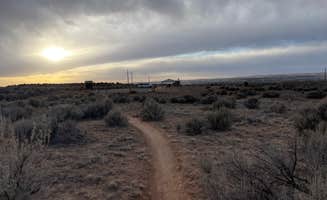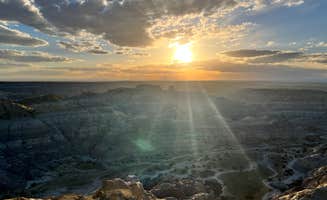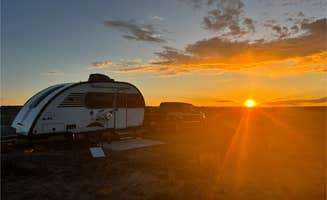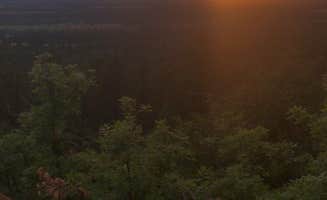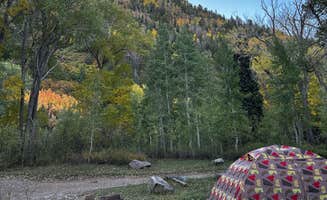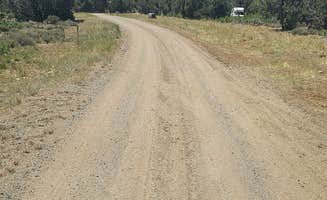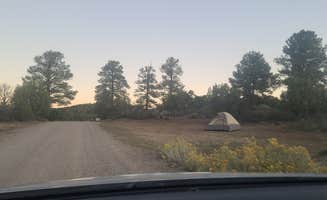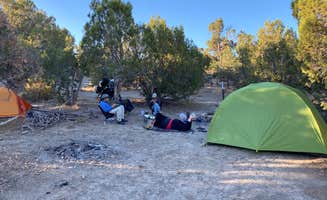Primitive camping near Farmington, New Mexico occurs primarily at elevations between 5,500-7,000 feet in a high desert landscape characterized by sandstone formations, badlands, and pinyon-juniper woodlands. Most dispersed sites experience temperature swings of 30-40°F between day and night, even in summer months. Winter camping requires preparation for nighttime temperatures that frequently drop below freezing from November through March.
What to do
Mountain biking at Alien Run Trailhead: The trailhead serves as both a basecamp for camping and access to well-maintained mountain biking routes. "Awesome spot and perfect for MTBing," notes Michael S., who camped at Alien Run Trailhead Basecamp. The area features both beginner and intermediate trails with unique terrain.
Explore badlands formations: The Bisti Badlands offer distinctive hoodoo formations and fossil beds accessible by short hikes from camping areas. "Land forms looked like they should be from a different planet!" explains Jordyn M. from Bisti / De-Na-Zin Wilderness Area. Most geological features require 1-3 mile hikes from the parking area.
Off-highway vehicle recreation: Several areas permit OHV use on designated trails. "OHV trails are all over. I am not a OHV guy, but looks to be OHV haven. Flat and hilly areas for lots of fun," reports Roger W. who visited dispersed sites near Brown Springs. Vehicles require proper registration and permits.
What campers like
Stargazing opportunities: The remote camping locations provide exceptional night sky viewing with minimal light pollution. "Sitting by the camp fire as we speak and just enjoying pure nature," shares Tracy H. who stayed at Chutes and Ladders Dispersed. Most campers report clear skies suitable for astrophotography.
Spacious, uncrowded sites: Many areas offer well-separated camping spots with room for multiple vehicles. "The spots are very spread out and not a lot of them that we passed," notes Amanda W. who stayed at Bayfield/Durango Dispersed Camping. During weekdays, campers frequently report having entire areas to themselves.
Cell service availability: Despite remote locations, most dispersed camping areas maintain usable cell coverage. "Strong 5G TMobile cell signal," reports one camper at Angel Peak. Another notes, "I had spotty cell service on Verizon and AT&T for work hot spot." Connection strength varies by location but enables basic communications at most sites.
What you should know
Seasonal closures affect availability: Several areas close during winter months for wildlife management. "This place is closed Dec-April due to it being considered elk habitat," explains Jason P. about BLM across from Mesa Verde. Check current status before travel, especially during winter and early spring.
Bathroom facilities vary significantly: Some sites offer maintained vault toilets while others have no facilities. "Clean vault toilets and covered picnic tables at some sites," notes Linda C. about Angel Peak. Pack appropriate sanitation supplies for areas without toilets.
Weather impacts road conditions: Many access roads become impassable after rain or snow. "We ended up raining overnight. We're from Minnesota so I had no idea the mud was going to be so horrible. My shoes were caked," warns Grace R. who camped at Chutes and Ladders. High clearance vehicles provide insurance against weather changes.
Tips for camping with families
Consider wind exposure: Several camping areas experience strong winds due to their elevation and exposed positions. "I'd strongly recommend tying at least one tent line to the shade structure around the picknick table in times of iffy weather," advises Andrea P. who stayed at Angel Peak NM Badlands | Dispersed Camping. Choose more sheltered sites when camping with children.
Limited shade availability: Many dispersed sites lack natural shade. "They have shelters over each table if you're a hammocker but given that it's on the edge of a canyon it's very windy," notes Roean A. about Angel Peak. Bring portable shade structures during summer months when temperatures regularly exceed 90°F.
Wildlife encounters possible: Cattle and wildlife may visit camping areas. "We had many of them around us all night and we even heard a pack of coyotes in the distance," reports one camper. Another mentions, "I did see a bear this morning! It walked away when I opened my trunk." Store food properly and maintain clean campsites.
Tips from RVers
Arrive early to secure suitable spots: Larger rigs require careful site selection at most dispersed areas. "We got there at 10:30 pm on a Thursday and we were lucky enough to grab the last spot," shares Matt F. about his experience at Angel Peak. Weekends typically fill by mid-afternoon during peak season (May-September).
Road quality varies dramatically: Access roads range from well-maintained gravel to rough terrain. "The GPS coordinate on Google were spot on. The driveway was a little rough and can get very pitted with wet weather," explains Shannon E W., who brought a 38-foot fifth wheel to Madden Peak Road - Dispersed. Most sites recommend RVs under 30 feet for optimal access.
Site leveling challenges: Many free camping areas feature uneven terrain. "Not all the sites are level, and this place can get a bit muddy if it rains," warns Greg M. about Chutes and Ladders. Bring extra leveling blocks and stabilization equipment for longer stays.


